- Home
- Prelims
- Mains
- Current Affairs
- Study Materials
- Test Series
01st Nov 2021
POWER MINISTRY PROPOSES AMENDMENTS IN EC ACT TO BOOST RENEWABLE ENERGY CONSUMPTION
The Ministry of Power has proposed amendments to Energy Conservation Act, 2001.
Objectives:


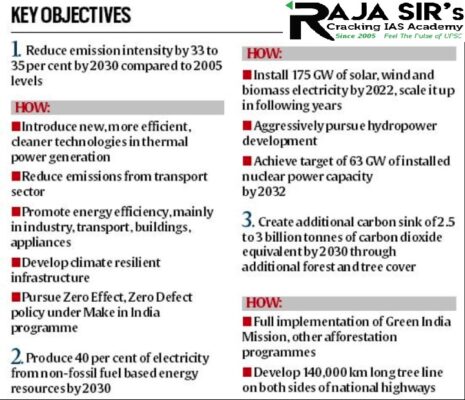
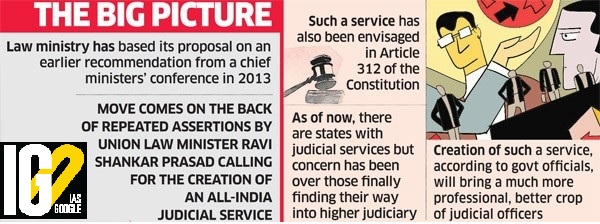
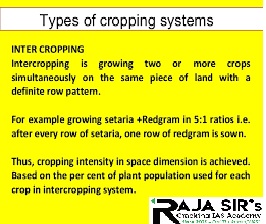


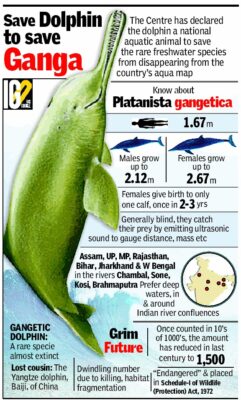

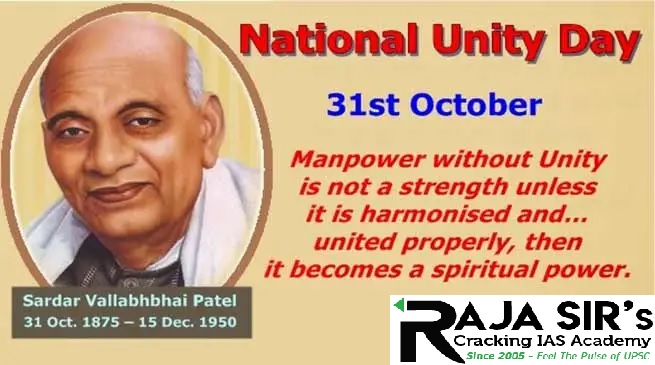

- To enhance demand for renewable energy at the end-use sectors such as industry, buildings, transport etc.
- To incentivise efforts on using clean energy sources by means of carbon saving certificate.
- The amendments are aimed at promoting consumption of renewable energy.
- The focus is to empower institutions to contribute for Paris commitments and fully implement Nationally Determined Contributions (NDCs) in a timely manner.
- Defining minimum share of renewable energy in the overall consumption by the industrial units or any establishment.
- Expanding the scope of act to include larger residential buildings, with an aim to promote sustainable Habitat.

- It would facilitate development of carbon market in India and prescribe minimum consumption of renewable energy either as direct consumption or indirect use through grid.
- This will help in reduction of fossil fuel-based energy consumption and carbon emission to the atmosphere.
- It will boost the adoption of clean technologies in various sectors of economy.
- It will promote the use of green Hydrogen as an alternate to the existing fossil fuels used by the industries.
- The additional incentives in the form of carbon credits against deployment of clean technologies will result in private sector involvement in climate actions.
- India is committed to an ambitious Nationally Determined Contributions (NDCs) of reducing emission intensity by 33-35% in 2030 against the levels of 2005.
- India is committed to achieve more than 40 percent cumulative electric power installed capacity from non-fossil-fuel energy resources by 2030.
- By adopting energy efficiency measures, India holds a potential to reduce about 550 Mt CO2 by 2030.

- To give policy on which it works and suggestions to national power conservation activities.
- Suggest the stakeholders how to make policies and programs on efficient use of power.
- Setting up a way and procedures to check the measurements and monitor Bureau of Energy Efficiency (BEE) improvements.
- Influence multilateral, respective, and private division backing to execute the Energy Conservation Act.
- Show BEE conveyance frameworks through public and private organizations.
- To advertise the phenomenon of energy efficiency and conservation in the country.
- Fix the energy usage standards for specific appliances and equipment.
- Give direction that there should be a mandatory display of labels specific equipment and appliances.
- Stop the building, import, and sale of the items which are not to the standards.
- Inform energy concentrated businesses, different foundations, and business structures as assigned customers
- Set up and recommend energy utilization standards and guidelines for assigned buyers
- Prescribe or make changes in Energy Conservation Building Codes (ECBC) to local conditions for energy conservation and efficient use of energy in a new commercial building with a contract load of 500 kW.
- Make and provide Central and State Energy Conservation Fund.
- Assists in developing policies with the objective of reducing the energy intensity of the Indian economy.
- Coordinates with consumers and other organization to identify and utilize the existing resources in performing the functions assigned to it under the EC Act.
- To show the delivery mechanisms of energy efficiency, by a public and private partnership.
- To set up a framework and procedures to monitor, verify and measure the efficient use of electricity in individual sectors as well as at the national stage.
- BEE is a statutory body under the Ministry of Power.
- It was set up on 1st March 2002 under the provisions of the Energy Conservation Act, 2001.
- It aims to decrease the usage of power and energy intensity in the economy by creating approaches and methodologies with a push on self-guideline and market standards.
- This will be accomplished with dynamic cooperation bringing about a quickened and continued reception of vitality effectiveness in all segments of the economy.
- The bureau would be liable for initiating the improvement of vitality proficiency of the economy through different administrative and limited time instruments.
- To suppose leadership and give policy system and guide to national energy efficiency and conservation programs and efforts
- To direct the stakeholders about the policies and programs on using energy efficiently
- To set up a framework and procedures to monitor, verify and measure the efficient use of electricity in individual sectors as well as at the national stage
- To show the delivery mechanisms of energy efficiency, by a public and private partnership
- To manage, implement, and plan energy conservation policies as given in the Energy Conservation Act.

- AIJS was first proposed through the 14th report of the Law Commission in 1958.
- The provision of AIJS was included in Article 312 of the Constitution through the 42nd Amendment in 1976.
- At present, various high courts and State service commissions hold exams to recruit judicial officers.
- Large vacancies and a huge load of pending cases in lower judiciary are primarily due to inordinate delay in holding regular exams by states.
- Increase in pendency of cases, impair quality of judgments and competence of the higher judiciary as well.
- State judicial offerings aren’t appealing to “talent” because of low salaries, rewards, and reimbursement from state governments.
- AIJS will allow a large number of judges to fill those vacancies in the lower judiciary through a trial across India. Applicants could be posted in states where more judges are needed to be selected through AIJS.
- The processing and the problem of the delay of cases would be eliminated with the timely hiring of judges for the lower judiciary in the district courts and subordinate courts through AIJS.
- AIJS would attract the best talents in the country and therefore could maintain high standards of judicial administration.
- The issue of corruption, nepotism, etc. that we notice in almost every selection process from now on, may decline. AIJS will lead to the appointment of quality judges, who have experience and have studied all types of cases, and public faith in the judiciary will be restored.
- AIJS will lead to the appointment of the best talents from other states in states with scarce resources.
- By following the reserve system in recruitment, underrepresented communities are represented in the judiciary.
- A career in judicial service will make the judiciary more responsible, professional, and equitable.
- The open competition would provide objectivity in the hiring process of the judiciary by reducing the discretion of the selection panel.
- AIJS will ensure a transparent and efficient recruitment method to attract the best talent in the Indian legal profession.
- The prospects for promotion to the superior courts, for the lower judiciary, at an early age would also increase, as they currently join at a much later age than Bar Association judges.
- The quality of adjudication and administration of justice would achieve uniformity throughout the country by eliminating differences at the state level in laws, practices, and standards.
- The streamlined and objective recruitment process would ensure a regular flow of good quality judicial officers for vacant positions, reducing the handling of cases.
- AIJS will improve the representative character of the judiciary by hiring trained officials from underprivileged sectors of society, especially women and SC / ST.
- A well-organized judicial service can attract talent from our law schools and young and well-informed judicial officers at the additional district judge level will make a difference. As ADJs and district judges, they can help the court system move faster and more efficiently.
- The main reason for the vacancies in judiciary is:
- The Bar Council of India has mismanaged legal education.
- No effort has gone into improving the standard of legal education across the country.
- An AIJS addresses neither the problem of disproportionately low pay nor the lack of career advancement.
- The first issue is regarding the age bracket and the prior experience that the exam seeks under its qualification criteria.
- The requirement for 7-years of experience would defeat the purpose of the legislators which was more participation from graduating students.
- India is a diverse county with diverse languages and judicial services need to deal in regional languages. Hence pan India, can cause a language barrier for selected candidates.
- Some High courts are of the opinion that their independence and the power to appoint judges in the lower and subordinate courts will be jeopardized with AIJS.
- A “national exam” risks shutting out those from less privileged backgrounds from being able to enter the judicial services.
- It may also end up not taking into account local laws, practices and customs which vary widely across States, vastly increasing the costs of training for judges selected through the mechanism.

- Relay planting enhances yield.
- Relay cropping is a method of multiple cropping where one crop is seeded into standing second crop before harvesting of second crop.
- Within-field rotation, allowing strips for planting other plants besides the major crop was more fruitful.
- Soil munching and no-till or a reduced tillage increases the annual crop yield up by 15.6% to 49.9%, and decreasing the environmental footprint by 17.3%, compared with traditional monoculture cropping.

- Strip cropping suggests planting several cultures in strips alternated in crop rotation.
- It is a regular practice on sloped lands to control soil erosion.
- The method applies to even terrains as well when two or more species are cultivated together.
- It is like intercropping, because alternative species grow in-between the cash plants.
- Strip cropping agriculture is used either to improve soil health or support primary species growth.
- It brings additional income to yield producers but is the cheapest soil conservation technique.
- India has a significant population of small farmers, many owning less than 2 hectares of land.
- About 70% of its rural households still depend primarily on agriculture for their livelihood, with 82% of farmers being small and marginal.
- Only 30% of all farmers borrow from formal sources. over 50% struggle to borrow from money lending sources.
- Strip cropping could be practiced in larger farms like the ones owned by industry and governments.
- Boosted soil health and fertility improved water quality, retained soil moisture.
- Raised water infiltration, reduced dust emissions, increased crop productivity, enhanced biodiversity, etc.

- An invasive species is an organism that is not indigenous, or native, to a particular area.
- It can cause great economic and environmental harm to the new area.
- The species adapt to a new area easily and reproduce quickly.
- Many invasive species are introduced into a new region accidentally.
- Example: Zebra mussels are native to the Black Sea and the Caspian Sea in Central Asia. However, Zebra mussels arrived in the Great Lakes of North America accidentally. There are now so many zebra mussels in the Great Lakes that they have threatened native species.
- They can be introduced to an area by ship ballast water, firewood, accidental release, and by people.
- Human actions are the primary means of invasive species introductions.
- Preying on native species
- Outcompeting native species for food or other resources
- Carrying disease
- Preventing native species from reproducing or killing a young native species.
- It can change the food web in an ecosystem by destroying or replacing native food sources.
- It can alter the diversity of species that are important habitat for native wildlife.
- Some species can change the conditions in an ecosystem, like changing soil chemistry or the intensity of wildfires.
- Cogon grass is an Asian plant that arrived in the United States as seeds in packing material. It provides no food value for native wildlife, and increases the threat of wildfire as it burns hotter and faster than native grasses.
- Feral pigs will eat almost anything, including native birds. They compete with native wildlife for food sources like acorns. Feral pigs spread diseases, such as brucellosis, to people and livestock.
- European green crabs found their way into the San Francisco Bay area in 1989. They outcompete native species for food and eat huge quantities of shellfish, threatening commercial fisheries.
- Water hyacinth is an aquatic plant, introduced to the U.S. from South America. In the wild, it forms dense mats, reducing sunlight for submerged plants and aquatic organisms, crowding out native aquatic plants.

- They are one of the only four river dolphin species in the world that spend all of their lives in freshwater.
- Other three are: Chinese river dolphin, Ganges River dolphin, and Amazon River dolphin.
- Habitat: Found in the lower parts of the Indus River in Pakistan and in River Beas, a tributary of the Indus River in Punjab, India.
- It is also known as the bhulans.
- It has been named the state aquatic animal of Punjab as well as national mammal of Pakistan.
- Their typical diet consists of a variety of fish, clams, and shrimp.
- Breeding typically begins between the ages of 6 – 10 when they reach sexual maturity.
- The flippers and tail are large but thin and the dorsal fin appears as a small hump on its back that is triangular.
- The eyes are very small and largely useless they are considered blind and are only able to detect the color and intensity of light.
- IUCN: Endangered
- Wild Protection Act, 1972: Schedule I

- India is the largest buyer of Israeli military equipment and Israel is the second-largest supplier of military equipment to India after Russia.
- India is the third-largest Asian trade partner of Israel, and its tenth-largest trade partner overall.
- Bilateral trade between India and Israel sales stood at $4.52 billion.
- Major imports by India from Israel include precious stones and metals, chemicals and mineral products, base metals and machinery, and transport equipment.
- Indian investments in Israel totaled USD 122.4 million.
- Under a comprehensive Work Plan for cooperation in agriculture, bilateral projects are implemented through MASHAV (Center for International Cooperation of Israel’s Ministry of Foreign Affairs) and CINADCO (Centre for International Agricultural Development Cooperation of Israel’s Ministry of Agriculture and Rural Development).
- India has benefited from Israeli expertise in horticulture mechanization, protected cultivation, orchard and canopy management, and post-harvest management particularly in Haryana and Maharashtra.
- Israeli drip irrigation technologies and products are now widely used in India.
- India is known in Israel as an ancient nation with strong cultural traditions and as an attractive tourist destination.
- Students studying Indian culture and religion have often found it to be similar to Israeli culture.
- Judaism and Hinduism are two of the world’s oldest religions. Indian scriptures like the Mahabharata translated in Hebrew have helped people in Israel realise the similarities between the two religions.
- India and Israel were split into Muslim and Hindu majority and Muslim and Jewish majority respectively after the British rule.

- He was the first Deputy Prime Minister and Home Minister of India.
- Commonly called Iron Man of India, Sardar Vallabhbhai Patel was a lawyer by profession and was lovingly given the title of Sardar, meaning leader or chief.
- Sardar Vallabhbhai Patel advocated Swaraj or self-rule and organized peasants in Gujarat in non-violent civil disobedience against the British.
- He is credited for the political integration of over 500 princely states into the independent Indian Union.
- Sardar Patel went to England to further study law after having put his elder brother through a university in England as well. He aced the Barrister-at-Law examination.
- Sardar Vallabhbhai Patel worked extensively for the rights of minorities and women, and against untouchability and caste discrimination.
- He came back to India and started his practice in Ahmedabad. He was offered a job for the British government on multiple occasions but turned them all down.
- 1918: He led a No Tax Campaign that urged the farmers not to pay taxes after the British insisted on tax after the floods in Kaira, Gujarat.
- 1928: He successfully led the Bardoli campaign and earned the title Sardar.
- He was deeply influenced by Gandhi’s ideology and principles and actively supported the Non- Cooperation Movement launched by Gandhi.
- 1930: He was among the leaders imprisoned for participating in the Salt Satyagraha initiated by Mahatma Gandhi.
- 1931: He was elected as the President of Indian National Congress in its Karachi session.
- 1936: He voiced his annoyance at Jawaharlal Nehru openly when the Nehru adopted socialism. Patel was also wary of Netaji Subhash Chandra Bose.
- 1942: In the Quit India Movement, Patel continued his support to Gandhi when several leaders criticized Gandhi.
- 1947: He was a leading member of the Constituent Assembly of India and Dr. B. R. Ambedkar was appointed on his recommendation.
- After independence, he was crucial for integration of over 500 princely states into the Indian Union.
- His efforts towards the consolidation of India earned him the title ‘Iron Man of India’.
- 1948: He launched ‘Operation Polo’ to integrate Hyderabad after the Nizam of Hyderabad entertained false hopes of either joining Pakistan or remaining independent.
- He was the key force in establishing the Indian Administrative Service and the Indian Police Service.
- Civil Services Day is celebrated on April 21 to mark Sardar Patel’s address to the probationers at All- India Administrative Service Training School in Delhi on this day in 1947.
- Rashtriya Ekta Diwas is being celebrated since 2014.









 Latest News
Latest News
 General Studies
General Studies